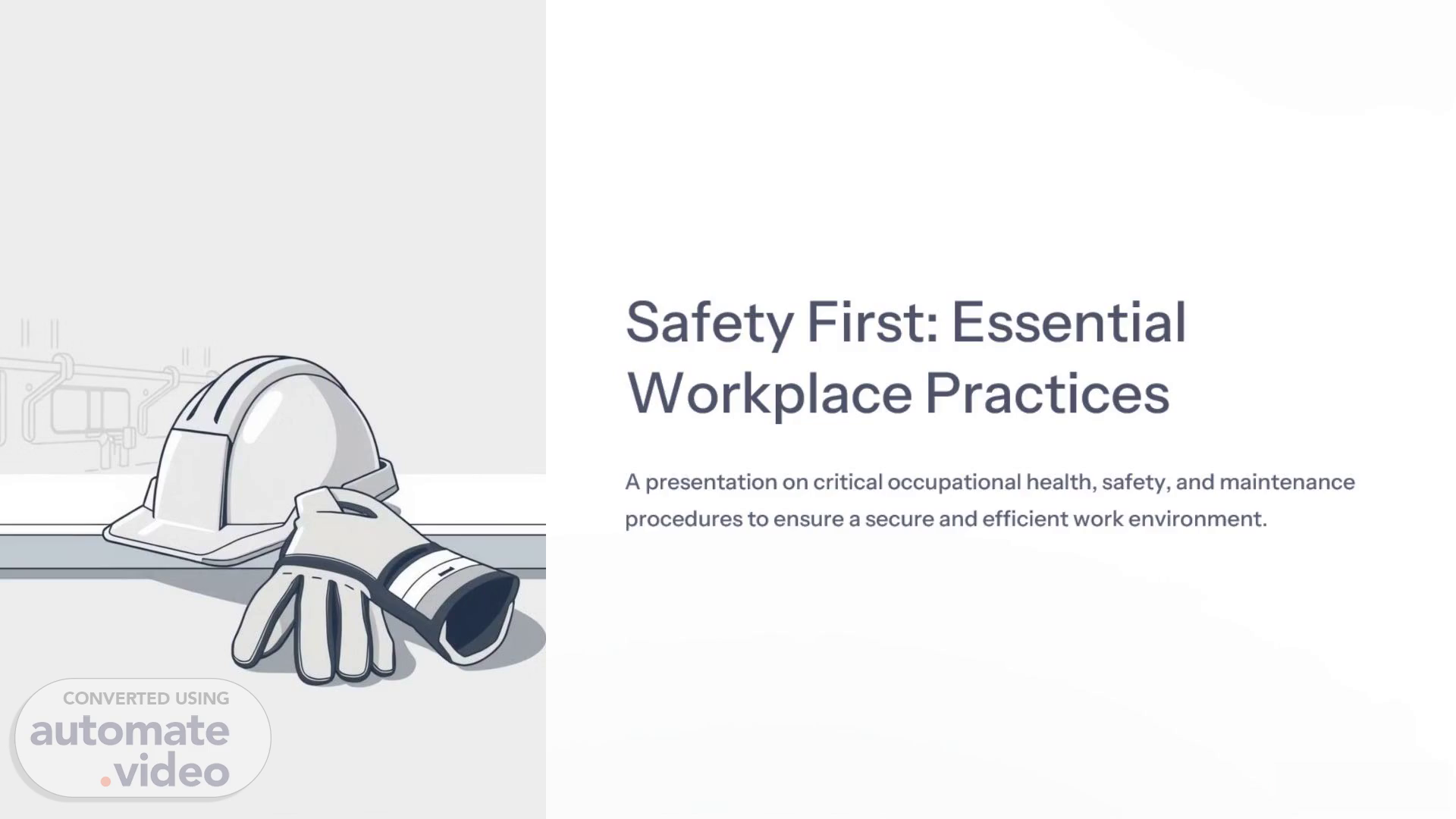Scene 1 (0s)
[Audio] Safety First: Essential Workplace Practices. A presentation on critical occupational health, safety, and maintenance procedures to ensure a secure and efficient work environment..
Scene 2 (11s)
[Audio] Handling Cleaning Solvents Safely Avoid Compressed Air Never use compressed air to clean clothes, hands, or body. Pressure can force solvents and dirt into the skin, causing infection or blood poisoning. Rinse Hot Objects After removing an object from a hot cleaning tank, rinse solvents away with water before using compressed air. Chemical Warnings Do not use carbon tetrachloride; its fumes can cause serious internal injury or death. Report all cuts, nicks, or eye injuries immediately..
Scene 3 (46s)
[Audio] Solvent Storage and Steam Cleaning. Storage and Handling Keep all inflammable cleaning solvents in closed tin containers. Whenever possible, store inflammable solvents in a separate, designated area. Use the appropriate type of gloves for the job or cleaning task. Next Steam Cleaning Protocol During steam-cleaning, place the object on a pallet and wear a face shield and rubber gloves for protection against loose debris..
Scene 4 (1m 13s)
Preventive Maintenance of Electrical Tools. A large number of workplace incidents, including electrocution and electrical shock, are caused by a lack of proper maintenance of electrical tools and equipment..
Scene 5 (1m 36s)
The Value of Preventive Maintenance. While some view Preventive Maintenance (PM) as unduly costly, the long-term benefits and savings far outweigh the costs of unscheduled breakdowns..
Scene 6 (1m 58s)
Electrical Safety: Always Do This. Regular Inspection.
Scene 7 (2m 16s)
Electrical Safety: Specialized Precautions. Flammable Atmospheres.
Scene 8 (2m 32s)
Electrical Safety: Never Do This. Damaged Equipment.
Scene 9 (2m 58s)
Proper Handling and Maintenance of Hand Tools. 1.
Scene 10 (3m 22s)
Hand Tool Usage and Accountability. Correct Usage.
